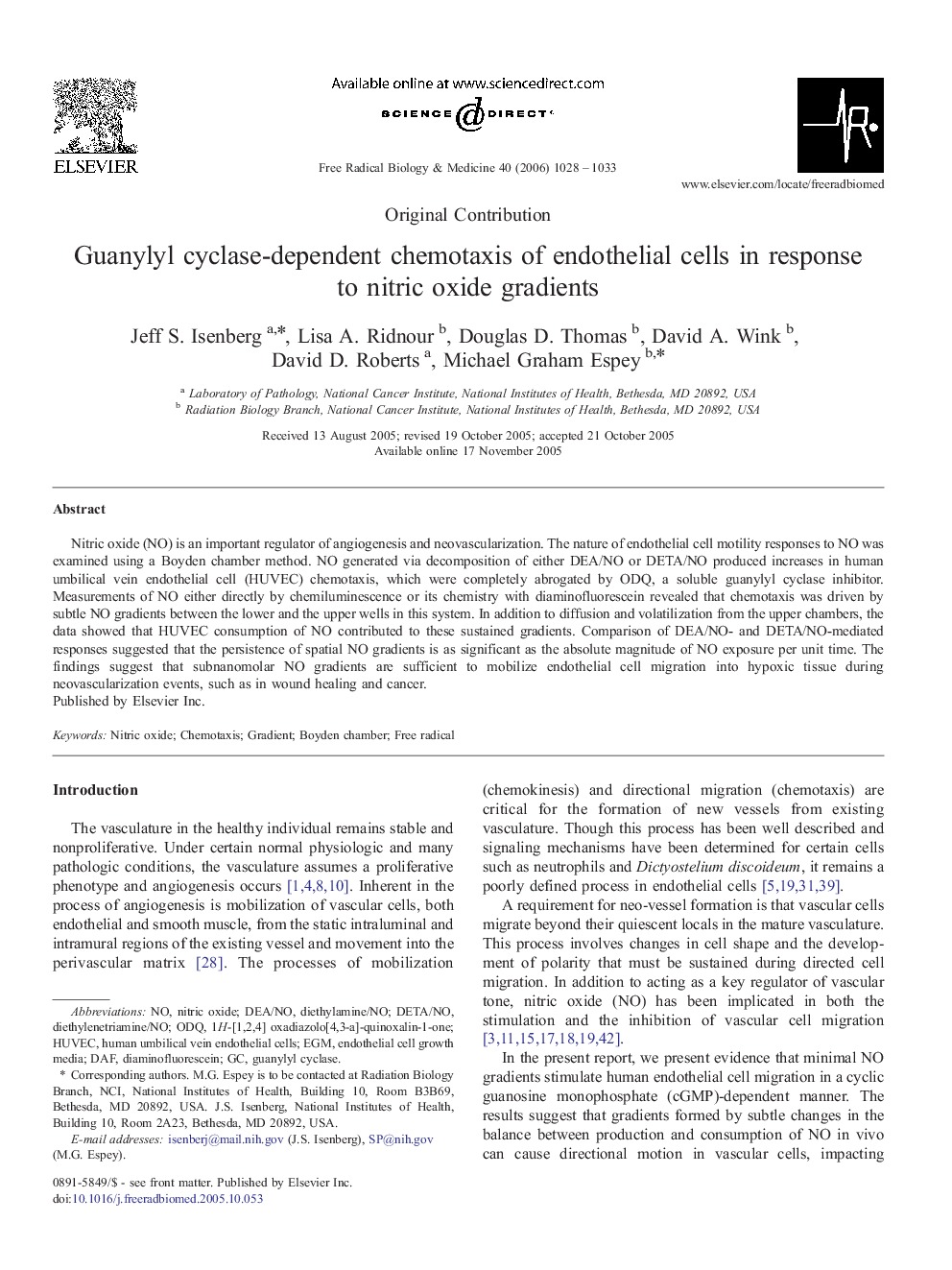| Article ID | Journal | Published Year | Pages | File Type |
|---|---|---|---|---|
| 1911682 | Free Radical Biology and Medicine | 2006 | 6 Pages |
Nitric oxide (NO) is an important regulator of angiogenesis and neovascularization. The nature of endothelial cell motility responses to NO was examined using a Boyden chamber method. NO generated via decomposition of either DEA/NO or DETA/NO produced increases in human umbilical vein endothelial cell (HUVEC) chemotaxis, which were completely abrogated by ODQ, a soluble guanylyl cyclase inhibitor. Measurements of NO either directly by chemiluminescence or its chemistry with diaminofluorescein revealed that chemotaxis was driven by subtle NO gradients between the lower and the upper wells in this system. In addition to diffusion and volatilization from the upper chambers, the data showed that HUVEC consumption of NO contributed to these sustained gradients. Comparison of DEA/NO- and DETA/NO-mediated responses suggested that the persistence of spatial NO gradients is as significant as the absolute magnitude of NO exposure per unit time. The findings suggest that subnanomolar NO gradients are sufficient to mobilize endothelial cell migration into hypoxic tissue during neovascularization events, such as in wound healing and cancer.
